Beijing, Xi'an, Guilin, Shanghai,
Suzhou, and Hangzhou

|
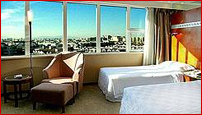
Tiantan Hotel, Beijing    
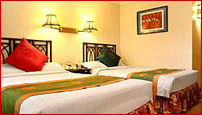
Jianguo Hotel Xian    
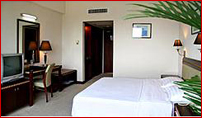
Plaza Hotel Guilin    
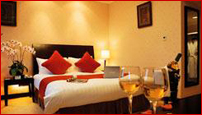
Holiday Inn Downtown
Shanghai    
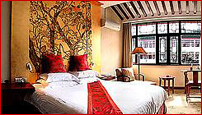
Garden View Hotel Suzhou    

Friendship Hotel Hangzhou    
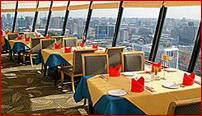
Beijing International Hotel     

Sheraton Hotel Xian     
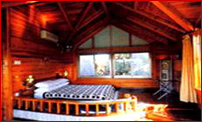
Merryland Resort Guilin     
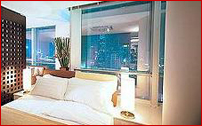
Grand Pacific Hotel shanghai
    
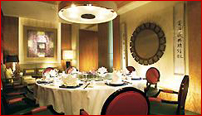
Renaissance
Hotel, Suzhou
    
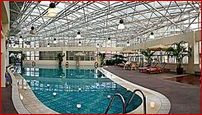
Radisson
Plaza Hotel, Hangzhou
    
|
|
Beijing-Xi’an-Guilin-Yangshuo-Shanghai-Suzhou-Hangzhou-Shanghai
13 days 12 nights tour package
Highlights:
• Take a cruise down the Li River, one of the
most scenic and serene rivers in the world.
You’ll then depart to Yangshuo, a tropical
paradise surrounded by mountains and bamboo
forests
• See the sights of Beijing, including the Great
Wall, the Forbidden City, and Tiananmen Square
• Spend time in the lush river cities of Suzhou,
a “heaven on earth” known for its classical
gardens and canals, and Hangzhou, famed for its
epic West Lake. As the saying goes, Above there
is heaven, below there are Hangzhou and Suzhou."
• See the bustling metropolis of Shanghai,
China’s biggest city and its window to the west
Standard
Tour and Luxury Tour Packages Available.
B=breakfast;
L=lunch; D=dinner Departure:
Upon booking
|
|
|
| |
STANDARD TOUR ITINERARY |
 |
Tour code:
P-BXGSHS |
|
| DAY 01 |
Arrive in Beijing
Upon arrival at the Beijing airport, you will be
me by your local English-speaking guide, and he
will take you to a
4 star hotel located in downtown
Beijing. If time permits, we can get
started with some sightseeing, but if
not, you are free to spend the night at
your own leisure, and resting up for the
days ahead.
|
|
4**** Hotel
    |
|
| DAY 02 |
Beijing (B, L)
After breakfast in the hotel, we’ll make
the short drive outside the city to the
Great Wall at Badaling. Badaling was the
first section of the Great Wall to be
opened to the public in 1957, and is
therefore the best known among visitors.
Badaling was the site of U.S.
President’s Richard Nixon’s visit to the
Great Wall on his historic trip to
China, and is a popular choice for
celebrities, foreign dignitaries and
leaders (U.S. President Obama visited
Badaling in November of 2009). Badaling
also offers incredible views of the wall
winding and twisting along the hills.
After a delicious lunch we will make the
short journey by minibus to the Ming
Tombs.
The Ming Tombs, about 50 km/31 miles
from Beijing, are where 13 emperors of
the Ming Dynasty (1368-1644) are buried.
This site was carefully chosen for its
feng shui principles by the third Ming
emperor Yongle (who also moved the
capital from Nanjing to Beijing and
began construction on the Forbidden
City). The tomb we will visit, Dingling,
is the tomb of the Wanli Emperor. It is
the only one of the Ming Dynasty Tombs
to have been excavated. It also remains
the only imperial tomb to have been
excavated since the founding of the
People's Republic of China. After
viewing the tombs, we will head to the “Shenlu”,
or the Spirit Way. The Spirit Way leads
into the complex, lined with statues of
guardian animals and officials, with a
front gate consisting of a three-arches,
painted red, and called the "Great Red
Gate". The Spirit Way, or Sacred Way,
starts with a huge stone memorial
archway lying at the front of the area.
Constructed in 1540, during the Ming
Dynasty, this archway is one of the
biggest stone archways in China today.
You will then be dropped of at the
hotel, and the rest of the evening can
be spent at your discretion.
|
|
4**** Hotel
    |
|
| DAY 03 |
Beijing (by train) (B, L)
After breakfast in the hotel we will
head over to the center of Beijing,
Tiananmen Square. The largest public
square in the world, Tiananmen Square is
seen as China’s political center. Its
grounds have seen some turbulent
moments, from the May 4th Movement of
1919 to the political turmoil of 1989.
The south of the square is marked by the
Chairman Mao Memorial Hall, while the
center of the square is dominated by the
Monument to the People’s Heroes, an
imposing 10-story granite obelisk. To
the east is the National Museum of
China, and to the west is the Great Hall
of the People, home to China’s
legislative bodies. The north of the
square is dominated by the Gate of
Heavenly Peace, known for its iconic
portrait of Mao Zedong, and is the
national emblem of China.
After walking across the street, we will
enter what is perhaps the greatest
attraction in China, the Forbidden City.
After walking across the square we will
enter the Forbidden City (known in
Chinese as Gu Gong), the largest
surviving palace complex and the former
home of the emperors of the Ming and
Qing Dynasty. The Forbidden City is one
of the greatest attractions in the
world. Built by the third Ming emperor
between 1406-1422, the Forbidden City
served as the official residence to the
Emperor of China until the last emperor,
Puyi, was forced to evacuate in 1924.
The Forbidden City is divided into two
parts. The southern section, or the
Outer Court was where the emperor
exercised his supreme power over the
nation. The northern section, or the
Inner Court was where he lived with his
royal family. Consisting of 980
buildings and with 8,707 bays of rooms,
the Forbidden City is the best example
of classical Chinese architecture in the
world, and is a wonder to behold.
To continue our theme of imperial
royalty, we’ll go from the Forbidden
City to the royal family’s retreat from
the Forbidden City, the Summer Palace.
Being northwest of the city center, the
Summer Palace has the largest royal park
and being well preserved, the Summer
Palace is ranked amongst the most noted
and classical gardens of the world. In
1998, UNESCO listed it as one of the
World Heritage Sites. Like most of the
gardens of Beijing, it could not elude
the rampages of the Anglo-French allied
force of 1860 and was destroyed by fire.
In 1888, Empress Dowager Cixi embezzled
navy funds to reconstruct it for her own
benefit, changing its name to Summer
Palace (Yiheyuan). She spent most of her
later years there, dealing with state
affairs and entertaining.
Highlights not to be missed are climbing
Longevity Hill, viewing the Empress
Dowager Cixi’s extravagant Marble Boat,
and talking a walk down Suzhou jie, a
canal meant to resemble the beautiful
river city of Suzhou.
You will then be dropped off at your
hotel for the evening.
|
|
4**** Hotel
    |
|
| DAY 04 |
Beijing-Xian (by train) (B, L)
Following breakfast we’ll make the short
drive to the Temple of Heaven park. The
complex was visited by the Emperors of
the Ming and Qing dynasties for annual
ceremonies of prayer to Heaven for good
harvest. The Temple of Heaven park is
best known for the Hall of Prayer for
Good Harvests, an iconic building famed
for its magnificent triple-gabled
circular roof. You will also have an
opportunity to walk the same imperial
walkway that the same emperors walked
hundreds of years ago in their holy
rites. You will also see Beijing’s
senior citizens using the park grounds
for everything from tai chi and ballroom
dancing to bullwhip practice!
Next you will have the chance to get
some great bargains on clothing at
Silk Street. Silk Street is one
of the famous clothing markets in
Beijing. It attracts domestic and
foreign tourists with varied styles,
colors and materials as well as an
inexpensive price. Remember to always
haggle, as you can regularly get 50% off
the asking price. If you need some help
your guide is more than happy to help!
Following your visit to the Temple of
Heaven, you will be driven to the
Beijing train station, and you’ll take
an overnight train to Xian. You will be
in a soft-sleeper compartment, so your
train journey will be both peaceful and
comfortable.
|
|
On the train to Xian from
Beijing |
|
| DAY 05 |
Xian (B, L)
You will arrive at the Xian train
station in the morning, and upon arrival
you’ll be met by your local
English-speaking guide. You’ll then be
taken to Xian’s greatest attractions,
and one of the greatest sites in all of
China, the Terracotta Warriors and
Horses Museum. The Terra Cotta Warriors
and Horses Museum is the result of the
most significant archeological
excavations of the 20th century. Work is
ongoing at this site, which is around
1.5 kilometers east of Emperor Qin Shi
Huang's Mausoleum. It is a sight not to
be missed by any visitor to China. Upon
ascending the throne at the age of 13
(in 246 BC), Qin Shi Huang, later the
first Emperor of all China, had begun to
work for his mausoleum. It took 11 years
to finish. It is speculated that many
buried treasures and sacrificial objects
had accompanied the emperor in his after
life. A group of peasants uncovered some
pottery while digging for a well nearby
the royal tomb in 1974. Life size
terracotta figures of warriors and
horses arranged in battle formations are
the star features at the museum. They
are replicas of what the imperial guard
should look like in those days of pomp
and vigor.
The museum is divided into three
sections: No. 1 Pit, No. 2 Pit, and No.
3 Pit respectively. They were tagged in
the order of their discoveries. No. 1
Pit is the largest, first opened to the
public on China's National Day, 1979.
There are columns of soldiers at the
front, followed by war chariots at the
back. No. 2 Pit, found in 1976, contains
over a thousand warriors and 90 chariots
of wood. It was unveiled to the public
in 1994. Archeologists came upon No. 3
Pit also in 1976. It is the command
center of the armed forces. It went on
display in 1989, with 68 warriors, a war
chariot and four horses.
Following our visit with the Terracotta
Warriors, we’ll then step back to an
even earlier time at the Banpo Neolithic
Museum. Located in the eastern outskirts
of Xi’an city, the Banpo Museum is the
first prehistoric excavation site museum
in China. Banpo (half slope) Village was
a typical Neolithic Matriarchal
community of the Yangshao (Respect
Splendid) culture (5000-3000 BC) around
6000 years ago. The Yangshao culture was
named after the first discovery of this
civilization in Yangshao, Henan
Province. About 400 sites of this type
have been discovered around the Yellow
River Basin, and the Banpo site is the
largest one. The site was discovered in
1953 during the construction of a power
plant. The excavation work lasted four
years, and the Banpo site was first
opened to the public in 1958. Since
then, two million people have visited
it.
The Banpo site, occupying an area of
approximately 50,000 square meters, was
divided into three parts: the living
area, the pottery making area and the
cemetery area. Among the ruins are 46
dwellings, two domestic animal pens and
over 200 storage pits, 174 adult tombs,
73 burial jars for kids, six pottery
making kilns and many production and
domestic tools. The site delivers
visitors a vivid picture of the long ago
lifestyle of the primitive Banpo people.
After visiting the Banpo Museum you’ll
be taken to your hotel, the 4 star
Jianguo Hotel, which is just a 15 minute
walk to the old city center.
|
|
4**** Hotel
    |
|
| DAY 06 |
Xian-Guillin (by air) (B,
L)
After breakfast we’ll make the short
drive to the Big Wild Goose Pagoda, a
pagoda surrounded by a still functioning
Buddhist temple (named Da Ci’en Temple).
The Big Wild Goose Pagoda is one of the
most famous Buddhist pagodas in China.
The Pagoda was built in the Tang Dynasty
(618-907) for the study of Buddhist
scriptures. Although it has been
attacked by centuries of weather, war
and seismic activity, which destroyed
most of the original material of the
structure, a pagoda by this name and
style still exists on the site. The Tang
regime gave orders to build a chamber
for the translation of Buddhist
scriptures in an effort to have the then
widely renowned Master Xuanzang agree to
be the head of the temple. Xuanzang was
a Buddhist monk who traveled to India,
translated Sanskrit scriptures and
developed theories of consciousness,
karma and rebirth that were adopted by
some later popular schools of Buddhism.
The hallowed pagoda is an architectural
marvel. It was built with layers of
bricks without any cement. The bracket
style used in traditional Chinese
architecture was also used in the
construction of the pagoda. The seams
between each layer of bricks and the "
prisms' on each side of the pagoda are
clearly visible. The grand body of the
pagoda with its solemn appearance,
simple style and high structure, is
indeed a good example of Chinese
traditional architecture.
Then you can unwind a bit by taking a
leisurely stroll on the Xi’an City Wall.
It's the most complete city wall that
has survived in China, as well being one
of the largest ancient military
defensive systems in the world. Xi'an
City Wall was erected in the 14th
century Ming Dynasty, under the regime
of Emperor Zhu Yuanzhang. When Zhu
Yuanzhang captured Huizhou, long before
the establishment of the Ming Dynasty,
he was admonished by a hermit named Zhu
Sheng, who told him to "build high
walls, store abundant provisions and
take your time in proclaiming yourself
emperor." If you like, you have the
option of renting a bike or a rickshaw
on the wall in order to cover more
ground in a shorter time.
In the late afternoon, you’ll be driven
to the Xian airport, where you will have
an evening flight to Guillin. Located in
Guangxi province in southwest China.
Upon arrival at the Guillin airport, you
will be met by your guide, who will take
you to your hotel. Your lodging will be
the 4 star Plaza Hotel.
|
|
4**** Hotel
    |
|
| DAY 07 |
Guilin-Yangshuo (B, L)
Today you will be cruising down one of
the world’s most stunning rivers, the
Li. Gorgeous karst peaks give you
surprises at each bend of the limpid
river under the blue sky. Water buffalo
patrol the fields, peasants reap rice
paddies, school kids and fisherman float
by on bamboo rafts. With its
breathtaking scenery and taste of a life
far removed from the concrete
metropolis, the scenery along the Li
River become one of China's top tourist
destinations. Some of the highlights you
will see on your 7-8hour cruise will be
Elephant Trunk Hill, a hill resembling
an Elephant taking water from its trunk,
Pagoda Hill, just a few minutes away
from the Elephant Trunk Hill, Daxu Town,
an ancient river town, and of course you
will also see local fisherman and
workers over their normal course of
work. The cruise down the Li River
offers a fascinating insight into the
lives of the local population here.
Our cruise will terminate at Yangshuo, a
lush and exotic county that includes
minority groups from all over Asia. In
the evening we will make the drive back
to Guillin, and you will again stay at
the Plaza Hotel.
|
|
4**** Hotel
    |
|
| DAY 08 |
Guilin-Shanghai (B, L)
Following breakfast we’ll visit the Reed
Flute Cave. The Reed Flute Cave (Ludi
Yan) is a fascinating gallery of natural
sculpture (limestone cave formations),
now enhanced by multicolored lighting,
which has been one of Guilin’s many
interesting attractions for over 1200
years. It rates as one of the top four
tourist sites in the city. The cave is
about 240 meters long and a tour lasts
about one hour. Along the u-shaped
route, you will have ample time see the
oddly shaped rocks and stone pillars
while the guide narrates interesting
stories about them. Illuminated by the
colored lights, the cave looks like a
dazzling underground palace. That’s why
the cave is also known as the Nature’s
Art Palace.
You’ll next be taken to the airport
where you’ll fly on to Shanghai, where
you’ll be met by your guide and taken to
your hotel, the 4 star Holiday Inn
Downtown Shanghai.
|
|
Holiday Inn Downtown
Shanghai     |
|
| DAY 09 |
Shanghai (B, L)
Following breakfast, we’ll start our day
in Shanghai with a visit to the Jade
Buddha Temple. The Jade Buddha Temple is
one of the richest and most frequented
Buddhist Temples in Shanghai. Jade
Buddha Temple in Shanghai is an active
temple, with 70 resident monks at the
last count. The 70 monks who live and
work there can sometimes be seen
worshiping. inside, the centerpiece is a
1.9-meter-high white jade Buddha, which
was installed here after a monk brought
it from Burma to Zhejiang Province in
1882. The seated Buddha, encrusted with
jewels, is said to weigh about one
thousand kilograms. A smaller, reclining
Buddha from the same shipment lies on a
redwood bed. In the large hall are three
gold-plated Buddhas, and other halls
house ferocious-looking deities.
Artifacts abound, not all on display,
and some 7,000 Buddhist sutras line the
walls.
Afterward you’ll have a chance to stroll
along Yuyuan Garden. Yuyuan Garden is a
famed classical garden, and even though
it may be small, it contains numerous
pavilions, halls, rockeries, ponds and
cloisters, and all have unique
characteristics. There are six main
scenic areas in the garden: Sansui Hall,
Wanhua Chamber, Dianchun Hall, Huijing
Hall, Yuhua Hall and the Inner Garden.
Each area features several scenic spots
within its borders.
Following a Chinese lunch we’ll cap off
our day of touring with a visit to the
city premier museum, the Shanghai
Museum. The Shanghai Museum is a world
famous museum of ancient Chinese art and
culture. The exterior design of the
round dome and the square base
symbolizes the ancient idea of a round
heaven and a square land. The museum is
divided into eleven galleries and three
exhibition halls. The eleven Galleries
cover most of the major categories of
Chinese art: Ancient Bronze, Ancient
Ceramics, Paintings, Calligraphy,
Ancient Sculpture, Ancient Jade, Coins,
Ming and Qing Furniture, Seals, and
Minority Nationalities. The museum is a
wonderful primer on ancient Chinese
culture, and is a must-see when coming
to Shanghai.
You will then be dropped off at your
hotel for the evening, and you have the
option of further exploring shanghai on
your own. With all the shops, cafes, and
street performances there is more than
enough to keep you busy for the night.
|
|
4**** Hotel
    |
|
| DAY 10 |
Shanghai-Suzhou (B, L)
In the morning you will take a 2 hour
train ride to the garden and canal city
of Suzhou. When you arrive you’ll be met
at the train station by your guide.
Youll first stop to unpack your things
at your hotel, the 4 star Garden View
Hotel. Then we will drive to Tiger Hill.
The 36-meter-tall Huqiu (Tiger Hill)
stands outside the lumen Gate to the
north west of Suzhou. It was where the
King of the State of Wu( a small state
in the Spring and Autumn Periods over
thousands of years ago) Fu Chai, buried
his father-Helu along with 3,000 swords.
Legend has it that on the third day
after the burial, a white tiger appeared
to guard the tomb, hence the name of the
hill.
The Yunyan Temple, another key
attraction on the hill, is one of the
most famous Buddhist land in this part
of China. Even Emperor Qianlong of the
Qing Dynasty could not resist its
peaceful ambience so he decided to make
the temple his temporary residence
during his Suzhou trip.
We’ll next arrive at the most famed
garden in Suzhou, the Humble
Administrator’s Garden. The garden is
the best representative of Chinese
classical gardens, constructed in the
Ming dynasty, which focuses on a central
pond with pavilions, terraces, chambers,
and towers located nearby, the garden is
divided into three parts: the eastern,
middle and western parts. At 5 hectares
the largest of these beautiful gardens,
it is one of the most famous one. It
provides everyone with pleasure. Don't
miss the Garden Museum - actually don't
miss any of this lovely place. You
should wear comfortable shoes, as
there's a lot of walking here.
To cap your day in Suzhou we’ll explore
the Lion Grove (also known as the Lion
Forest). Lion Grove is another
interesting garden in Suzhou, which is
well-known for oddly-shaped rocks and
deep caves. Like the Humble
Administrator's Garden, this one was
also built hundreds years ago in the
Yuan Dynasty. A monk called Tian Ru
constructed this garden to commemorate
his teacher. The garden's name comes
from the rocks' resemblance to
lions.Occupying an area of over one
hectare, Lion Grove is filled with
rockeries of various shapes and sizes,
which have made the garden the "Kingdom
of Rockeries" in China. Qing Emperor
Qianlong once paid a visit to Lion Grove
and was impressed by the intricate
labyrinth of caves there. Delighted, he
wrote the inscription "Really
Interesting". The buildings in Lion
Grove are representative works of the
Yuan-dynasty architecture.
The rest of your night can be spent at
your discretion, but you may want to
walk along the many teahouses and cafes
that dot the city.
|
|
4**** Hotel
    |
|
| DAY 11 |
Suzhou-Hangzhou (B, L)
Following breakfast in the hotel, you’ll
be taken to the train station and you’ll
make the short train ride to Hangzhou.
As in Suzhou, you’ll be met at the train
station by your guide. Your hotel for
the night will be the 4 star Friendship
Hotel. After freshening up in the hotel,
we’ll head to the most famous of
Hagnzhou attractions, West Lake.
West Lake is man-made and created after
the Chinese love for garden style parks
for recreation.
Hangzhou's West Lake Scenic Area, in the
southwest of the city, covers 60 square
kilometers (23 square miles), of which
West Lake itself occupies 5.6 square
kilometers (2.2 square miles). It was
originally the center of the city, but
now the Qiantang River is becoming the
central feature as the south bank is
developed in similar fashion to
Shanghai’s Pudong District. West Lake is
a place of tranquility where urbanity
becomes a silhouette on the northeast
horizon and mountains near and far
surround it on the other three sides.
The occasional pagoda and Chinese-style
arched bridge add atmosphere to the
tree-lined walkways, verdant islands and
hills.
Near West Lake is Lingyin Temple, one of
the ten most famous ancient Buddhist
temples in China. It also houses various
Buddhist literature and treasures
situated in front of the Temple, and is
famous for its more than 470 stone
carvings of Buddhist figures, which
dated from the 10th to 14th centuries.
Then it is off to the Six Harmonies
Pagoda and its nearby temple. Located on
the north bank of the Qiantang River,
Six Harmonies Pagoda was built in 970 to
dispel the river's tidal bore, which was
thought to be an evil manifestation.
Liuhe Ta, Six Harmonies Pagoda, was once
a seven-storey stone pagoda, but later a
13-story wooden pagoda was built around
the outside enclosing the wooden
structure. The top level, accessed by a
spiral staircase in the stone pagoda,
offers a fine view of the surrounding
mountains, the Qiantang River and
Qiantang River Great Bridge, which is
the largest double-decker (road above,
rail below) bridge built by China. The
ceiling of each level is carved and
painted with flowers, birds and animals
in an elegant and delicate style.
Six Harmonies Pagoda is named after
nearby Six Harmonies Temple, but it
could be said there are six harmonies
within the structure itself where the
7-story inner pagoda harmonizes with the
13-story outer pagoda.
The rest of the evening can be spent at
your own leisure.
|
|
4**** Hotel
    |
|
| DAY 12 |
Hangzhou-Shanghai (B, L)
In the morning you will be taken to the
train station and you’ll make the quick
trip back to Shanghai. You’ll be met by
your Shanghai guide upon arrival. As in
your time here before, you’ll stay at
the Holiday Inn Downtown hotel. Your
first stop on today’s touring will be
the Bund, Shanghai’s most famous and
recognizable landmark. The Bund is a
waterfront embankment and has been
regarded as the symbol of Shanghai for
hundreds of years. It affords marvelous
views across the river of the Pudong
district and its numerous towers. The
most famous and attractive sight which
is at the west side of the Bund are the
52 various buildings of different
architectural styles including Gothic,
Baroque, Romanesque, Classicism and the
Renaissance.
Across the river we’ll visit he Oriental
Pearl TV Tower, the most distinctive
landmark of the Shanghai skyline. From
the top of the tower you can get
marvelous views of the Bund and the east
bank of Shanghai.
You will then have free time for the
rest of the day. You might want to
stroll along West Nanjing Road, which is
near the Bund and is Shanghai’s most
famed shopping street. In addition to
high-street fashion and the usual
outlets and stores, open-air bars,
abstract sculptures, and lingering
sounds from street musicians will
enhance your experience. At night
flashing neon signs illuminate the
magnificent buildings and spangle the
night skyline of this lively city.
|
|
4**** Hotel
    |
|
| DAY 13 |
Depart from Shanghai (B)
Following breakfast in the hotel you
will be driven to the Shanghai airport,
and from there you will fly on to your
next destination, ending your tour with
the Great Wall Adventure Club. |
|
|
|
|
Package includes:
1.Pickup service
from railway and airport to hotel
2.The transportation between scenic spots
3.Eleven nights accommodation based on two persons sharing one standard
room in the four star hotel
4 Soft-sleeper Train ticket from Beijing to Xi’an, Soft seats Shanghai/Suzhou/Hangzhou/Shanghai, Flight tickets
from Xi’an to Guilin and Guilin to Shanghai.
5.Professional local guide
6.Meals indicated in the itineraries
7.The admission of the first gate
|

